 Most viewed - KYOTO 京都府 Most viewed - KYOTO 京都府 |

A gate being renovated.57 views
|
|

Manpukuji (萬福寺) is a large temple complex and headquarters of a Chinese Zen sect (Obaku-shu). It's one of the Big Three Zen sects in Japan (besides Soto and Rinzai).57 viewsThe founder was Chinese Zen master Yinyuan Longqi (Ingen) from Fujien Province in China who came to Japan via Nagasaki in 1654. Manpukuji (or Mampukuji) is part of the Japan Heritage for Uji tea history. A short walk from Obaku Station on the JR Nara Line and Keihan Uji Line.
|
|

Very fine roof.57 views
|
|

石碑57 views
|
|

Daiohoden Hall entrance.57 views
|
|

Side view of the Shaka Nyorai.57 views
|
|

57 views
|
|

Rice was finally served at the end with pickles.57 views
|
|
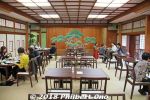
The 1st floor is the main dining room. It even has a Noh stage.57 views
|
|

Arashiyama's famous bamboo grove.56 views
|
|

56 views
|
|

Miei-do Hall (Daiden)56 views
|
|

56 views
|
|

Opening in 2016, Kyoto Railway Museum is a modern makeover of the old Umekoji Steam Locomotive Museum that opened in 1972. Short bus ride from Kyoto Station.56 views
|
|

56 views
|
|

56 views
|
|

56 views
|
|

56 views
|
|

56 views
|
|

56 views
|
|

56 views
|
|

Inside the Tennoden Hall is Hotei, one of the Seven Gods of Good Fortune. 天王殿(てんのうでん)、弥勒菩薩(布袋)56 views
|
|

56 views
|
|

Daiohoden Hall roof.56 views
|
|

About Daiohoden Hall.56 views
|
|

Chinese-style incense burner.56 views
|
|

In front of Daiohoden Hall.56 views
|
|

Shaka Nyorai or Gautama Buddha, founder of Buddhism. 釈迦如来座像56 views
|
|

56 views
|
|

Daiohoden Hall also has statues of the Eighteen Arhats. 十八羅漢像56 viewsThey are the original followers of the Buddha who have reached the state of Nirvana and are free of worldly desires.
|
|

Each arhat has a name.56 views
|
|

56 views
|
|

56 views
|
|

56 views
|
|

56 views
|
|

Manpukuji's famous wooden fish board used like a gong to indicate the time. 魚梆56 views
|
|

Prayer tablets (ema)56 views
|
|

On my second visit to Manpukuji, I went with a group of foreigners and had lunch at the temple's restaurant Oryokaku (黄龍閣) serving Chinese-style shojin-ryori (religious vegetarian cuisine) called fucha-ryori (普茶料理).56 views
|
|

Fucha ryori became very popular after it was first introduced in Japan. No wonder. It looks exotic and tastes absolutely delicious. Salad.56 views
|
|
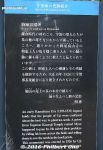
About Koma no Ashikage-en Monument. According to legend, local people in Uji pondered over how to sow the seeds to grow tea.56 viewsIt was then Priest Myoe (明恵), from the Kegon-shu Buddhist Sect, came on horseback and trotted on the field saying, "Plant the seeds in my horse's hoof prints." This monument was built by Uji tea growers in 1926 to express their appreciation to Myoe.
|
|

In 15th century, Ashikaga Yoshimitsu and Yoshinaga loved Uji tea so much that they designated seven tea fields as the Seven Reknown Tea Fields. Today only Okunoyama Chaen remains.56 views
|
|
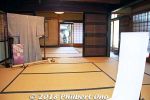
Inside the Former Bito Family Merchant's House (Kyu-Bitoke 旧尾藤家).56 views
|
|

55 views
|
|

Eikando is a Jodo-shu Buddhist temple famous for autumn foliage, especially red maples. One of Kyoto's most photogenic spots for fall leaves.55 views
|
|

View from the two-story pagoda on the hillside. This would be a sea of red during the peak period. I have to come back here.55 views
|
|

Osaka Loop Line train55 views
|
|

500 Series shinkansen55 views
|
|

"Raicho" Tokkyu Limited Express, KUHA48955 views
|
|

JNR for Japan National Railways55 views
|
|

Train kiosk from the good old days (1950s-60s).55 views
|
|

55 views
|
|

Sanmon main gate. 三門(さんもん)55 views
|
|

At the Sanmon Gate, pay the admission to enter the temple. It's a very interesting temple, but they don't really have English explanations.55 views
|
|

The Sanmon main gate (exit side). 三門(さんもん)55 views
|
|

From Sanmon Gate, path to Tennoden Hall. The path is modeled after dragon scales.55 views
|
|

From Sanmon Gate, path to Tennoden Hall. The path is modeled after dragon scales.55 views
|
|

Karahafu roof gable55 views
|
|

Altar inside the Kaizan-do Hall.55 views
|
|

Tennoden Hall (Important Cultural Property). 天王殿(てんのうでん)55 views
|
|

55 views
|
|

伽藍堂55 views
|
|

Near the Sanmon Gate is this entrance to Icho-an restaurant. 銀杏庵55 views
|
|

Manpukuji also has a subtemple and treasure house called Hozoin (宝蔵院) noted for storing tens of thousands of woodblocks that are still used for printing Buddhist scriptures.55 views
|
|

Tetsugen Doko (1630-1682), one of Ingen's Japanese disciples, started the project to make these printing blocks still used today.55 views
|
|

Chotaro Horii is the 6th-generation owner/operator of Horii Shichimeien which was originally Okunoyama Chaen (奥ノ山茶園), one of Uji's Seven Reknown Tea Fields (七名園).55 views
|
|

Kotohira Shrine has this unique affiliate shrine named "Kishima Shrine" (木島神社) which is the left half of this building. (The right-half shrine is Sarutahiko Shrine [猿田彦神社] for the god of transportation and directions.)55 viewsKishima Shrine is unique in Japan for these two koma-neko cat guardians. Shrines usually have koma-inu lion-dog guardians (to ward off evil spirits), but only this shrine in all of Japan has cat guardians instead.
|
|
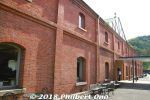
Opened in 2012, Maizuru Brick Park is a complex of 12 large brick buildings near the Japanese navy base. They were built from 1901 until the 1920s to store munitions (arsenal) for the Imperial Japanese Navy. 55 viewsEight of the buildings are National Important Cultural Properties and a few of them have been renovated and opened to the public. This is the first building you enter, the Maizuru World Brick Museum (赤れんが博物館).
Hours 9:00 am–5:00 pm, closed Dec. 29–Jan. 1. 15-min. walk from JR Higashi-Maizuru Station (JR Maizuru Line and Obama Line). Parking available.
Map: https://goo.gl/maps/ZuFd1eXrNds
|
|
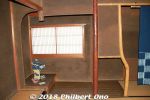
The Japanese-style first floor used very expensive materials. These thin wood pillars are shochikubai (matsu pine, bamboo, and ume plum tree).55 viewsFormer Bito family home, Yosano, Kyoto Prefecture.
|
|

Tenryuji is a UNESCO World Heritage Site, part of the "Historic Monuments of Ancient Kyoto".54 views
|
|

Tenryuji temple's Kuri building.54 views
|
|
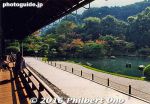
Tenryuji's Japanese garden.54 views
|
|

54 views
|
|

54 views
|
|

54 views
|
|

54 views
|
|

Yasuragi Kannon statue at the bottom of the steps of Amida-do Hall.54 views
|
|

54 views
|
|

Hojo-ike Pond. The two-story pagoda (Tahoto) in the distance.54 views
|
|

Bridge to Benten-shima on Hojo-ike Pond.54 views
|
|

Gasen-do Hall54 views
|
|

54 views
|
|

54 views
|
|

54 views
|
|

54 views
|
|

54 views
|
|

54 views
|
|

Back to the Promenade area near the entrance with the 0 Series shinkansen.54 views
|
|

The classic and iconic "Bullet Train."54 views
|
|

54 views
|
|

54 views
|
|

80 series EMU car KuHa 86001 54 views
|
|

Sleeper train54 views
|
|

54 views
|
|

54 views
|
|

Inside Showa-no-Eki Station.54 views
|
|

Daihatsu three-wheeler car54 views
|
|

54 views
|
|

Shinkansen traffic control center.54 views
|
|

Chinese-style Somon Gate (Important Cultural Property), the first entrance to Manpukuji. It's a quite a large temple complex with numerous buildings. A few of the major buildings are open to the public. 総門(そうもん)54 views
|
|

Lotus pond in front of Sanmon Gate. 放生池54 views
|
|

Before going to Tennoden Hall, we turned left to this small gate leading to Kaizan-do Hall.54 views
|
|

Chinese-style architecture is obvious with the roof corners curling upward.54 views
|
|

Statue behind the Hotei statue.54 views
|
|

54 views
|
|

54 views
|
|

54 views
|
|

Daiohoden Hall (Important Cultural Property), Manpukuji's main temple. 大雄寶殿(だうおうほうでん)54 views
|
|

Round window at Daiohoden Hall.54 views
|
|

Altar inside Daiohoden Hall, Manpukuji's main temple. It worships a sitting Shaka Nyorai or Gautama Buddha. 大雄寶殿(だうおうほうでん)54 views
|
|

These mats on the floor are not for sitting. The priests stand behind the mats and chant.54 views
|
|

54 views
|
|

Rear view of Daiohoden Hall.54 views
|
|

About the Bell Tower54 views
|
|

Women cleaning the sliding lattice doors before repapering.54 views
|
|

"Obaku-san Fucha Ryori" bento-type (box lunch) fucha ryori for our large tour group. It costs around ¥3,000.54 views
|
|

Inside Icho-an. We could immediately tell that it was Chinese since the food was served on a turntable (Lazy Susan) which you can see in the photo.54 views(This photo was taken after we finished lunch.)
|
|

54 views
|
|

Manpukuji also has a subtemple and treasure house called Hozoin (宝蔵院) noted for storing tens of thousands of woodblocks used for printing Buddhist scriptures.54 views
|
|

54 views
|
|

Woodblock for printing Buddhist scripture. Looks very worn out.54 views
|
|

Buddhist picture print too.54 views
|
|

Well54 views
|
|

Koma no Ashikage-en Monument in front of the entrance to Manpukuji temple. This can be roughly translated as "Hoof Print Field Monument." 駒蹄影園跡碑54 viewsThis monument is part of the Japan Heritage designation for Uji tea history.
|
|
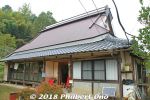
This is the main lodge where the kitchen, dining, and bath facilities are. It also has one guest room with twin beds. It is a traditional farmhouse with a thatched roof protected by a corrugated tin.54 viewsFarm house in Ayabe, Kyoto Prefecture.
|
|
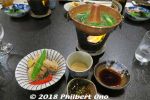
Shorenkan Yoshinoya ryokan is probably more famous for its food, especially crab during crab season (Nov. to March). 54 viewsBut it wasn't crab season when we were there so we didn't have any crab. But the food was still excellent. Kyotango, Kyoto Prefecture.
|
|
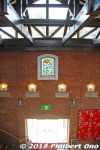
Inside the huge Maizuru World Brick Museum.54 views
|
|
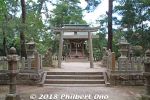
Near the cannon is Amanohashidate Shrine. 54 views
|
|
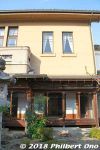
The first floor was Japanese style, while the second floor was Western-style (Spanish).54 viewsFormer Bito family home, Yosano, Kyoto Prefecture.
|
|

After the Bito Home, we continued our walking tour of Chirimen Kaido Road. 54 viewsOur guide, Aoki Jun'ichi, from Yosano Tourist Association, showed this exterior lattice design featuring the kanji character for "Tan" (from "Tango" 丹後) which is similar (by no coincidence in this case) to the kanji character for "yen" (円).
|
|

Tenryuji temple is the main temple of one of the 15 branches of the Rinzai school of Zen Buddhism.53 views
|
|

53 views
|
|

Whoever landscaped or designed the temple grounds was an artistic genius.53 views
|
|

Courtyard garden53 views
|
|

53 views
|
|

53 views
|
|

Amida-do Hall53 views
|
|

53 views
|
|

53 views
|
|

The two-story pagoda (Tahoto) is a short climb up the stairs. Worth the view.53 views
|
|

Bridge to Benten-shima on Hojo-ike Pond.53 views
|
|

53 views
|
|

80 series EMU car KuHa 8600153 views
|
|

The museum's main highlight is the Umekoji steam locomotives on a roundabout or roundhouse next to a turntable.53 views
|
|

53 views
|
|

This real steam locomotive offers rides a few times a day.53 views
|
|

Passenger car of the steam locomotive train.53 views
|
|

Nijo Station reconstructed here.53 views
|
|

53 views
|
|

53 views
|
|

Inside a sleeper train.53 views
|
|

Sleeper train dining car53 views
|
|

Inside Osaka Loop Line train53 views
|
|

EF58 150 (left) and EF81 103 (right) locomotives for sleeper trains, Twilight Plaza Zone.53 views
|
|

53 views
|
|

53 views
|
|

100 series shinkansen53 views
|
|

53 views
|
|

Reconstructed rural train station from the good old days (1950s-60s). Named "Showa-no-Eki Station."53 views
|
|

53 views
|
|

53 views
|
|

For train mechanics.53 views
|
|

53 views
|
|

"Twilight Express" Sleeper train for Sapporo53 views
|
|

Train diorama53 views
|
|

Train nameplates put on the front of the train.53 views
|
|

Many artifacts on display on both the 1st and 2nd floors of t he Main Hall.53 views
|
|

53 views
|
|

53 views
|
|

The Sanmon main gate (Important Cultural Property). 三門(さんもん)53 views
|
|

From Sanmon Gate, path to Tennoden Hall. The path is modeled after dragon scales.53 views
|
|

53 views
|
|

53 views
|
|

Kaizan-do Hall53 views
|
|

Manpukuji temple bell in a corridor.53 views
|
|

Manpukuji temple bell in a corridor.53 views
|
|

53 views
|
|
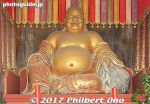
Inside Manpukuji's Tennoden Hall is Hotei, one of the Seven Gods of Good Fortune. 天王殿(てんのうでん)、弥勒菩薩(布袋)53 views
|
|

53 views
|
|

53 views
|
|

53 views
|
|

53 views
|
|

Corridor to Daiohoden Hall.53 views
|
|

53 views
|
|

53 views
|
|

Bell tower (Important Cultural Property)53 views
|
|

Dessert. One of the best meals I ever had in Japan. Advance reservations are required. It's not a walk-in restaurant. More info photos in Japanese: https://www.obakusan.or.jp/eat/53 views
|
|

53 views
|
|

53 views
|
|

Entrance to Hozoin.53 views
|
|

Sample printings.53 views
|
|

Very unusual thatched roof home near Manpukuji.53 views
|
|

This is the symbol of Tofukuji temple, a bridge named Tsutenkyo (通天橋) that goes across this mass of red Japanese maple trees. You see this photo in all the Kyoto travel brochures.53 views
|
|
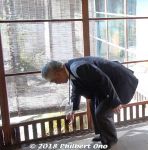
Before air conditioners, they had these sliding slats for ventilation in summer.53 views
|
|
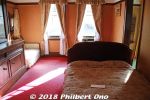
Western-style (Spanish) 2nd floor bedroom.53 views
|
|

Arashiyama is another major tourist spot in Kyoto with a river, bridge, boat rides, temples, cormorant fishing, and more. Saga-Arashiyama Station is one rail station near Arashiyama.52 views
|
|

Tenryuji temple52 views
|
|

52 views
|
|

52 views
|
|

This path of maples would be redder a several days earlier. Path to Miei-do Hall.52 views
|
|

Everywhere you look in Eikando is so utterly photogenic, or should I say paint-genic since they didn’t have cameras when the temple was built. Everywhere looks like a scene from a classic Japanese painting.52 views
|
|

Even the shape and placement of the trees are so artistic.52 views
|
|

52 views
|
|

52 views
|
|

Main entrance to the temple.52 views
|
|

Courtyard garden seen from the Shaka-do Hall.52 views
|
|

Courtyard garden seen from the Shaka-do Hall.52 views
|
|

52 views
|
|

52 views
|
|

Amida-do Hall52 views
|
|

Temple bell52 views
|
|

52 views
|
|

52 views
|
|

Bridge to Benten-shima on Hojo-ike Pond.52 views
|
|

Bridge to Benten-shima on Hojo-ike Pond.52 views
|
|

52 views
|
|

52 views
|
|

52 views
|
|

52 views
|
|

This is probably the most steam locomotives you'll ever see in Japan. Some or most of them still run.52 views
|
|

Turntable to direct the locomotives to the desired track and direction.52 views
|
|

Old steam locomotive for the Imperial family.52 views
|
|

52 views
|
|

52 views
|
|

52 views
|
|

Friendly workers wave to passengers riding on the steam locomotive train.52 views
|
|

Inside Nijo Station that was moved here. Now the museum gift shop.52 views
|
|

52 views
|
|

Blue Train dining car52 views
|
|

52 views
|
|

EF58 150 (left) and EF81 103 (right) locomotives for sleeper trains, Twilight Plaza Zone.52 views
|
|

Main Hall52 views
|
|

52 views
|
|

52 views
|
|

52 views
|
|

Inside kiosk.52 views
|
|

Kiosk owner's space.52 views
|
|

Ice cream52 views
|
|

Showa-no-Eki Station gate to platform.52 views
|
|

52 views
|
|

52 views
|
|

52 views
|
|

52 views
|
|

52 views
|
|

52 views
|
|

Farewell JNR in 1987.52 views
|
|

寿塔52 views
|
|

52 views
|
|

Manpukuji corridor lanterns.52 views
|
|

52 views
|
|

Rear view of Daiohoden Hall.52 views
|
|

Hatto Hall's bell-shaped window.52 views
|
|

About Hatto Hall. 52 views
|
|
| 2715 files on 11 page(s) |
 |
 |
7 |  |
 |
|